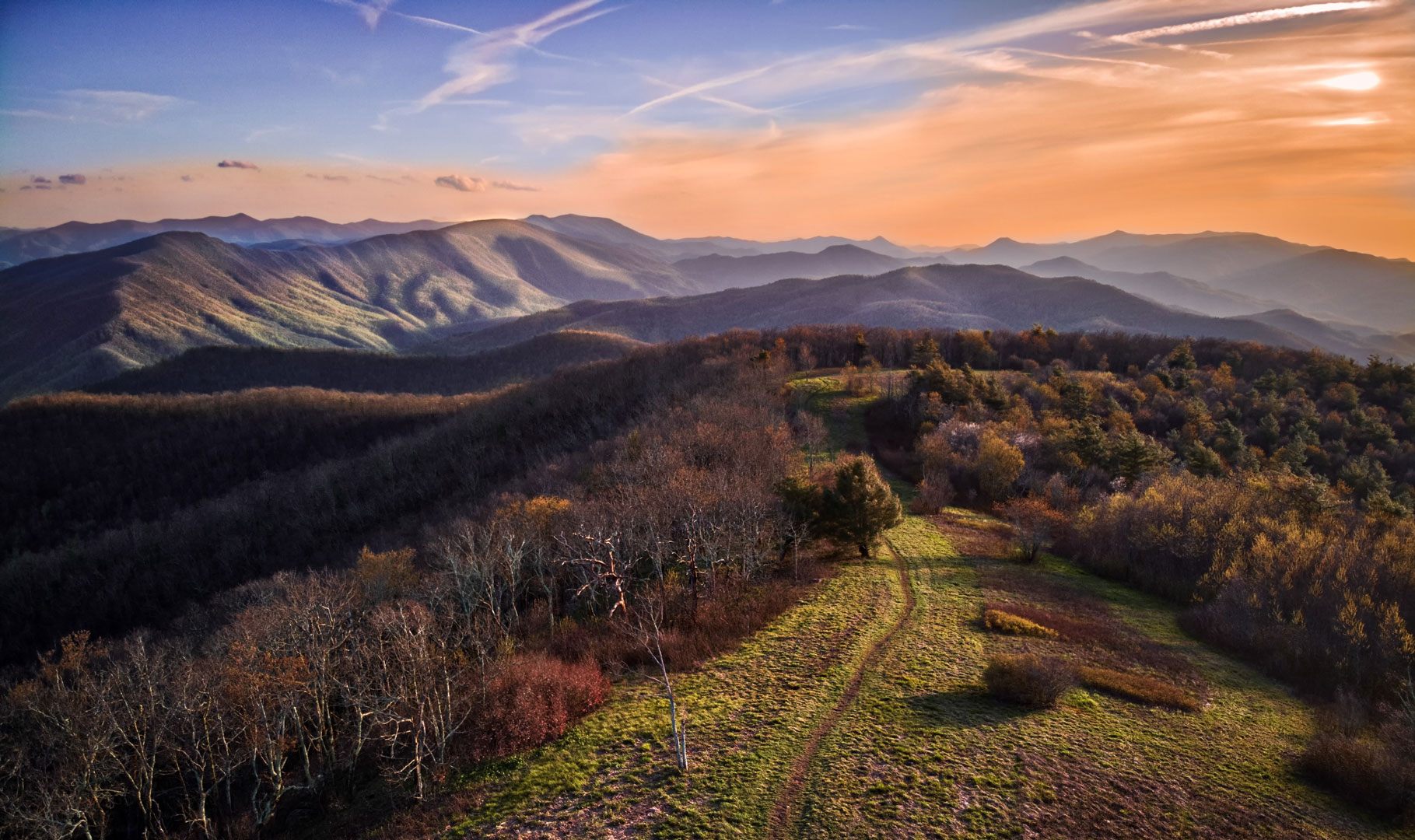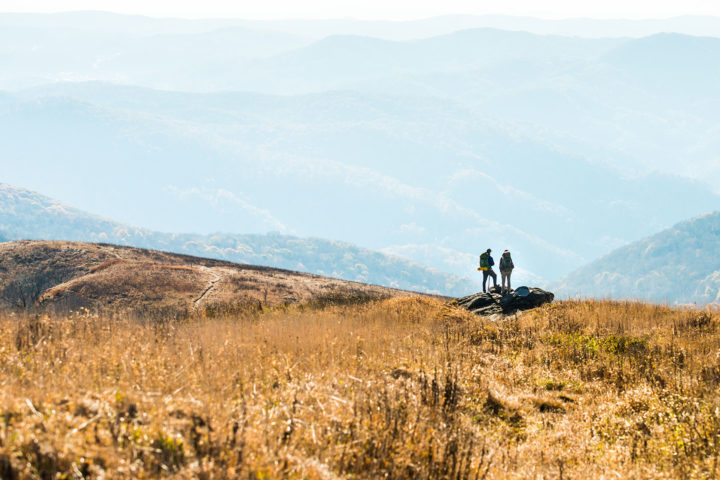By Jordan Bowman, ATC Director of Communications
Climate Resiliency and the A.T.
March 5, 2021
The following post is part of our series on climate change and the Appalachian Trail. For other parts in the series, click the links below.
- Part One – Preserving the “Oxygen” of the Trail
- Part Two – The A.T. and Climate Change: Reviewing the Basics
- Part Three – Climate Resiliency and the A.T.
- Part Four – Climate Action and the A.T. Landscape: A Primer
- Part Five – A Climate-Resilient A.T. Depends on Effective Federal Policy
- Part Six – Building a Climate-Resilient A.T. Landscape
One of my favorite feelings when stepping onto the Appalachian Trail (A.T.) is when I cross the border from the modern world and into a thick forest. I feel it more than I see it: not only the shade of the canopy overhead, but also a sense of power among the trees. I’m reminded that, for most of the trees I walk by, I am a blip in their lives. They were here long before I was. And, unless some tragedy occurs, the vast majority of them will be here long after my hiking days have ended.
That power also speaks to the strength of the forests, their ability to withstand the impact of catastrophic events: wildfires, hurricanes, floods, invasive species, and more. This strength is referred to as resiliency, the ability to recover from or withstand an impact. The bigger the impact, the more resilient a forest must be to withstand the event and quickly recover.
As the impacts of climate change become more severe, protecting the resiliency of forests around the world — including on the A.T. — has become a key focus of conservation groups like the Appalachian Trail Conservancy (ATC). For the ATC, this process begins by identifying two key forest characteristics: the level of connectivity, and how well that forest functions.

Beyond preserving the iconic views that inspire millions each year, securing the lands around the Trail increases the connectivity of Trail habitats and, thus, increases the overall resiliency of the A.T. landscape as a whole. Image courtesy of Josh Tullock
Climate Resiliency and the Importance of Connectivity
“Climate Resiliency is defined as the capacity of a site to maintain biodiversity, productivity and ecological function as the climate changes,” said Marian Orlousky, Director of Science and Stewardship for the ATC. “Climate-resilient sites have higher than average landform diversity — forests, wetlands, etc. — and higher than average connectivity between those landforms.”
In other words, climate-resilient locations have a variety of landscapes that are connected together, allowing for more biological diversity throughout the ecosystem. For living species, this diversity of habitat — and the connectivity between multiple kinds of habitats — means they have options. And more options mean a better chance for survival.
By its very nature, the A.T. landscape has high connectivity. The unbroken footpath strings together forests and other habitats across 14 states and 11 degrees of latitude. However, this connectivity is both narrow and linear — having a web of connectivity would mean even more opportunities for movement between suitable habitats.
This is one of the primary reasons why landscape protection is a key focus of the ATC and its partners. Beyond preserving the iconic views that inspire millions each year, securing the lands around the Trail increases the connectivity of Trail habitats and, thus, increases the overall resiliency of the A.T. landscape as a whole. Expanding protections for these naturally resilient areas will only become more important as the effects of climate change become more pronounced, in order to provide the best opportunities for species survival in the future.

Functional habitats are better able to recover from disturbances and are better able to support the species living there, as well as any species that may move into them in the future. Image courtesy of Jon Riley.
Conserving Forest Functions
Connecting habitats along the A.T. is only one part of improving climate resiliency. The function of a habitat — literally how well it works — is equally as important.
“When a habitat is functional, all of its systems are acting as they should,” said Orlousky. “The nutrient cycle is working properly, the water cycle is working properly, species diversity is being maintained and the system is in balance. Areas with high functionality are better able to recover from disturbances. These habitats are also better able to support the species living there, as well as any species that may move into them in the future.”
It is possible to find large blocks of healthy forests all along the A.T., such as at Cove Mountain Preserve in Pennsylvania. Large and intact interior forest blocks often have a wide diversity of age class and structure (in other words, not all of the trees and other plants are the same age or species) and have high native species biodiversity. These are some of the most resilient areas along the Trail, making it vital for us to keep them connected and functional.
The ATC continues to identify areas where increased functionality can be achieved through focused conversation practices. One key example is our focus on the Roan Highland red spruce forests. Forest management practices dating back to the early 1900s led to a lack of forest diversity and trees that have grown too close together, inhibiting their growth and the overall function (and thus the resiliency) of this important landscape. The restoration work led by the ATC, and in cooperation with the partners of the Southern Appalachian Spruce Restoration Initiative, will help expand and connect endangered high elevation spruce-fir forests, as well as protect important habitat for many rare species.
Climate-resilient forests will be essential as we face the oncoming challenges the Trail is predicted to face as the climate continues to change. By reinforcing the climate resiliency of A.T. lands, we increase the chance that the A.T. experiences and landscapes we know and love will be able to recover and adapt. If we succeed, future generations will be able to experience the same sense of wonder and power the Appalachian forests hold for many of us today.
By supporting our work, you will help us protect the climate-resilient forests of the Trail, helping ensure it will continue to benefit us all for generations to come.
Lead image courtesy of Horizonline Pictures
Discover More

Official Blog
Preserving the “Oxygen” of the Trail
How Benton MacKaye’s call for protecting the “oxygen in the mountain air along the Appalachian skyline” guides our work in combating climate change on the A.T.

Official Blog
The A.T. and Climate Change: Reviewing the Basics
As we continue our series on climate change and its effects on the Appalachian Trail, it is important to lay the groundwork for several key topics.

Official Blog
Partnering for A.T. Landscape Protection
A massive amount of collaboration and shared dedication is required to ensure A.T. landscapes are conserved.
